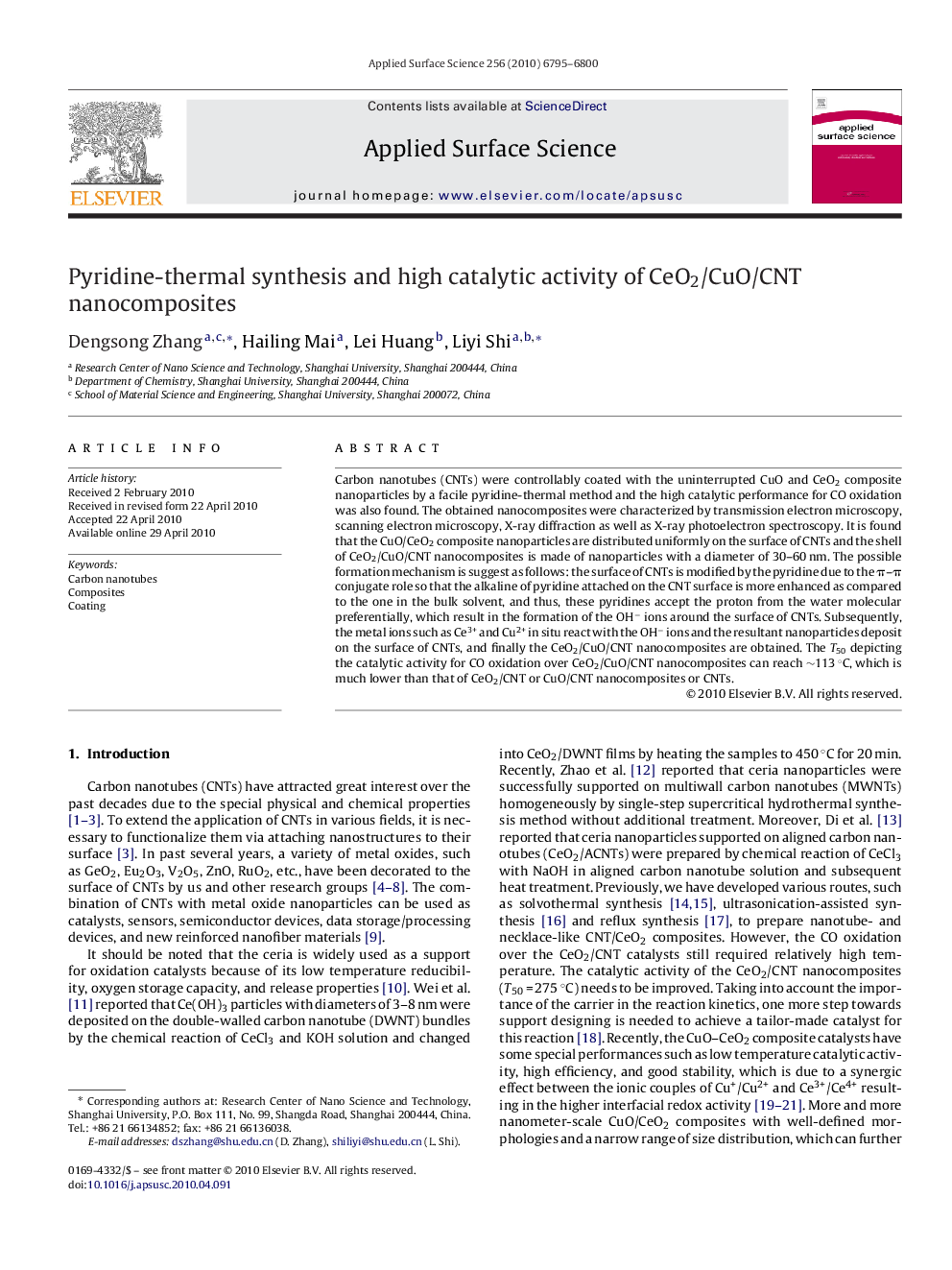| Article ID | Journal | Published Year | Pages | File Type |
|---|---|---|---|---|
| 5365499 | Applied Surface Science | 2010 | 6 Pages |
Carbon nanotubes (CNTs) were controllably coated with the uninterrupted CuO and CeO2 composite nanoparticles by a facile pyridine-thermal method and the high catalytic performance for CO oxidation was also found. The obtained nanocomposites were characterized by transmission electron microscopy, scanning electron microscopy, X-ray diffraction as well as X-ray photoelectron spectroscopy. It is found that the CuO/CeO2 composite nanoparticles are distributed uniformly on the surface of CNTs and the shell of CeO2/CuO/CNT nanocomposites is made of nanoparticles with a diameter of 30-60 nm. The possible formation mechanism is suggest as follows: the surface of CNTs is modified by the pyridine due to the Ï-Ï conjugate role so that the alkaline of pyridine attached on the CNT surface is more enhanced as compared to the one in the bulk solvent, and thus, these pyridines accept the proton from the water molecular preferentially, which result in the formation of the OHâ ions around the surface of CNTs. Subsequently, the metal ions such as Ce3+ and Cu2+ in situ react with the OHâ ions and the resultant nanoparticles deposit on the surface of CNTs, and finally the CeO2/CuO/CNT nanocomposites are obtained. The T50 depicting the catalytic activity for CO oxidation over CeO2/CuO/CNT nanocomposites can reach â¼113 °C, which is much lower than that of CeO2/CNT or CuO/CNT nanocomposites or CNTs.
